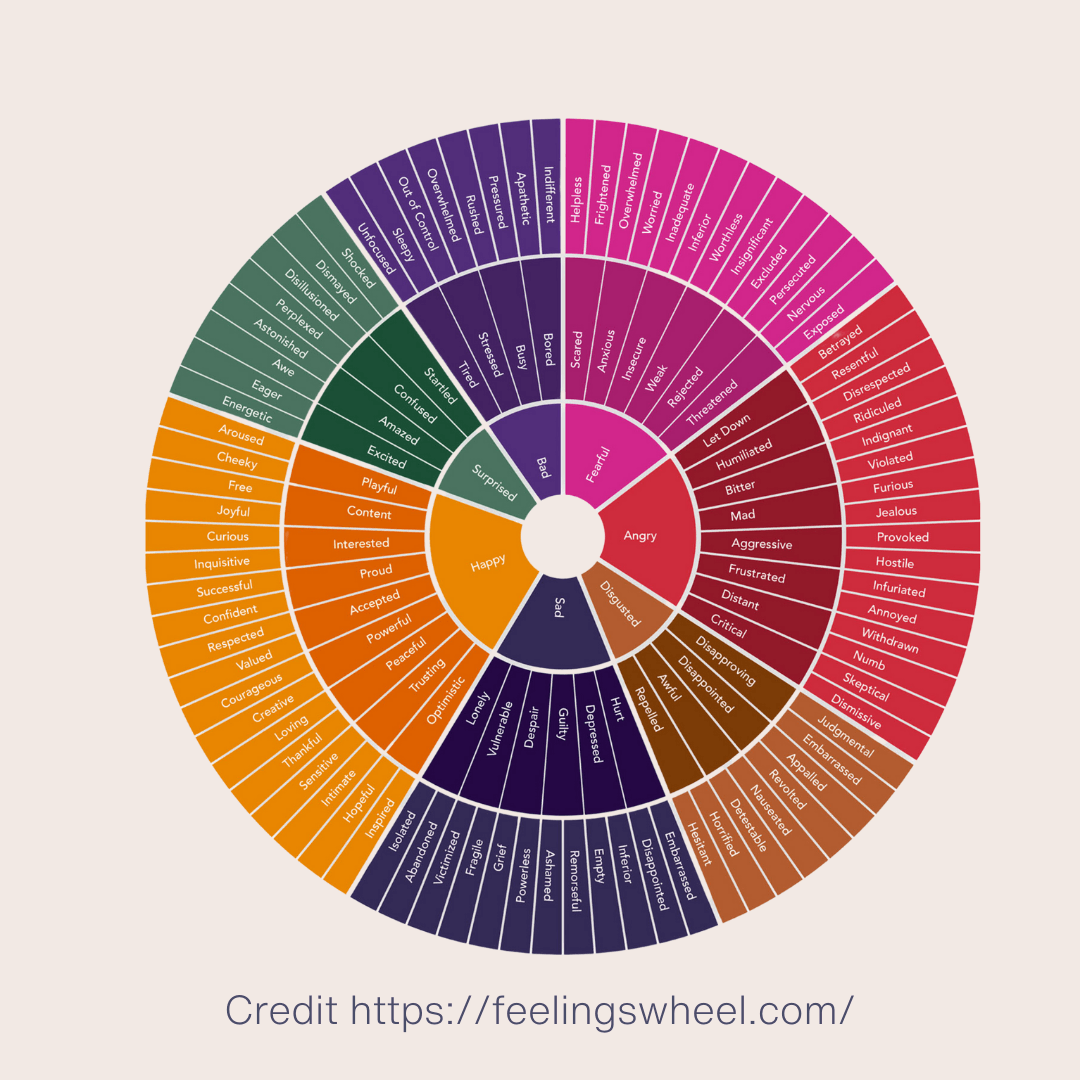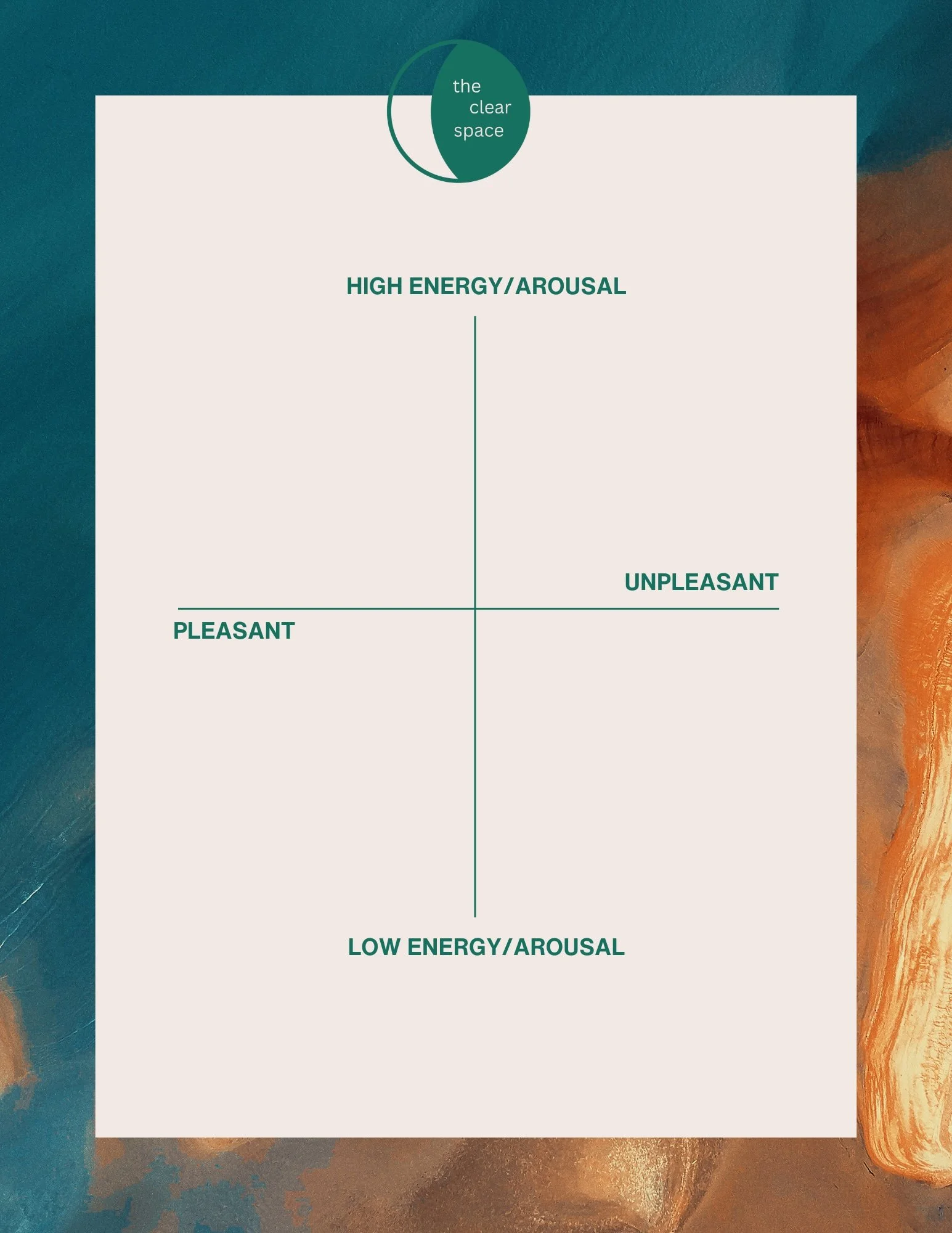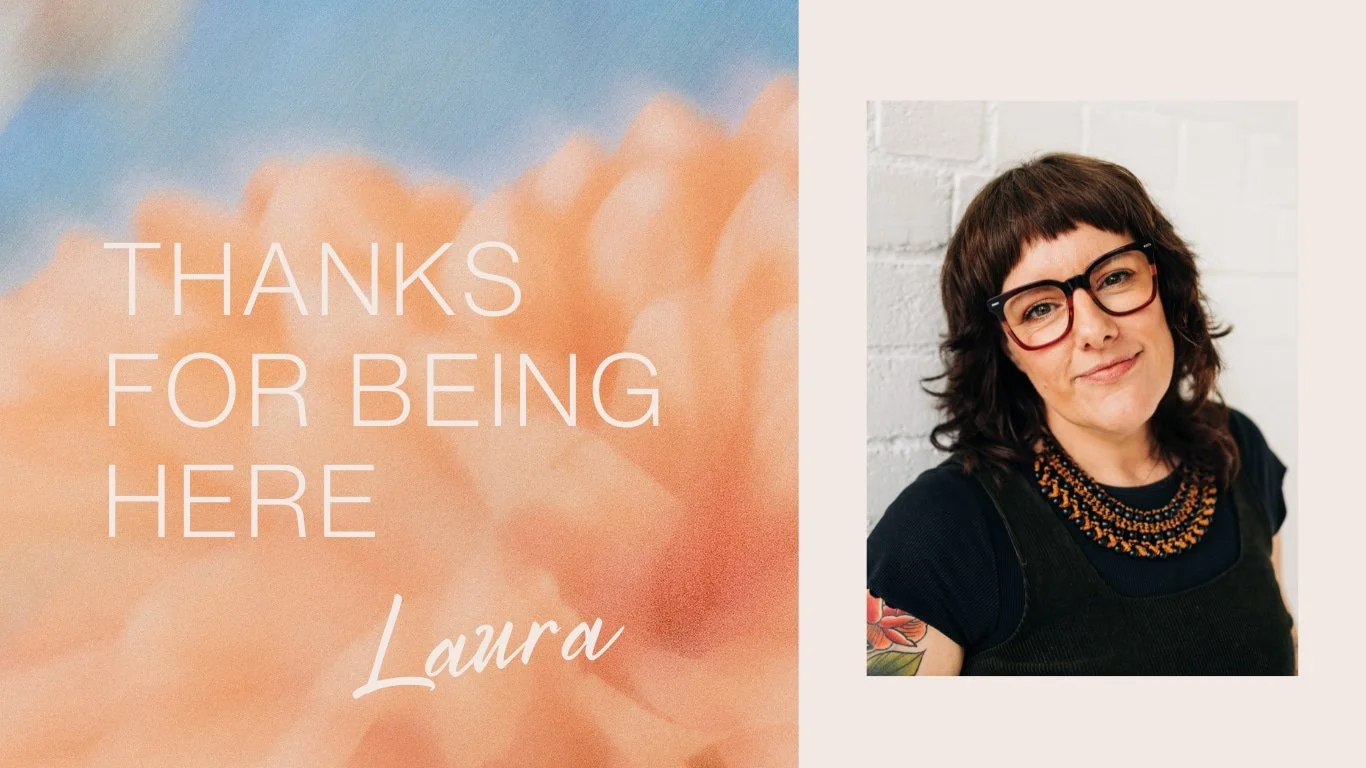Valence arousal model: connecting with your internal state
The valence arousal model or the core affect model: taking a simple view of our internal experience
In today’s post I’ll be sharing some reflections about the valence arousal model. “What do you feel in your body” can seem like a fairly simple question but many of us really struggle to answer it. A lot of my therapy clients have learned to disconnect from their bodily experience as a survival mechanism.
As someone who’s AuDHD (autistic and ADHD) I really get that struggle with interoceptive awareness, or awareness of our inner experience. On the other side of the coin many of us struggle with being overwhelmed by feelings or sensations without being able to make sense of them. You might even, like me, experience both of these things.
If you’re new here I’m Laura, a counsellor, nature therapist, somatic therapist and space holder. My offerings are all about supporting you to connect with yourself and the world around you. As a therapist who’s neurodivergent I’ve done a lot of work on my own journey to be more in touch with what’s happening internally. As someone who used to live very much in my head, rather than my body, it’s taken a lot of unlearning to get to a point where I can (mostly!) sit with what ever I’m feeling or experiencing and have tools and approaches to soothe my nervous system if needed.
The feelings wheel as an alternative to the valence arousal model of understanding feelings
In the past, when working with clients who struggle to connect with their feelings, I’ve used the feelings wheel (pictured below) as an alternative to valence and arousal. While this can be a useful tool, when I think about it from my own perspective I realise that it doesn’t always help me to connect with what’s going on internally because I can’t always neatly categorise my feelings in the way the wheel does. This is a really common experience for us neurodivergent folk.
Balancing cognitive awareness with connection to our bodily experience
Why does this matter? As I’ve shared before, I believe that a cognitive understanding of our experience can only take us so far. Many of my counselling and therapy clients have an amazing level of cognitive awareness of their experience. What they often struggle with is connecting to the ways that experience shows up in their bodies. When we struggle to connect with our bodily experience, it can be much harder to self-soothe and to respond in a way that supports us to return to a more regulated state. It’s also important to remember that thoughts are not feelings and feelings are not thoughts.
The core-affect model, also known as the arousal valence model or the arousal valence model of emotions, can be a great tool to explore and understand our emotions based on our level of arousal/energy and whether the feeling is pleasant or unpleasant. Unlike the feelings wheel this model allows us to understand our experience from the perspective of our nervous systems (level of arousal) and emotions (how pleasant or unpleasant it feels).
This might feel difficult or unfamiliar at first but with practice over time it’s absolutely possible to increase our interoceptive awareness or internal awareness. Regularly checking in with our current state and where we fall on the arousal valence matrix can also support us to identify the patterns and triggers that contribute to our nervous system and emotional states.
Befriending our nervous system states and our emotional states
Before I talk more about the core-affect model, I want to say a bit more about why being able to identify our emotional and nervous system states is important.
When we are in a state of dysregulation our ‘prefrontal cortex’ or the thinking part of the brain switches off, leaving our ‘amygdala’ also known as the "lizard brain" in charge. The amygdala is great at driving action in response to danger but it doesn’t always know when the danger is real or not. I know that dysreulation is a bit of a buzz word at the moment but for anyone who’s experienced trauma or who has a sensitive nervous system due to neurodivergence, having a better understanding of the mechanics of your nervous system can be really helpful. There’s some more detailed information about our nervous system states here.
Even the simple act of connecting with and actively identifying our experience can decrease the anxiety we’re feeling in response to it. I often come back to the cliched but true statement that ‘what we resist persists’ and I have watched client after client sit in my therapy room and express their astonishment when allowing themselves to feel the feelings they usually push away doesn’t feel nearly as overwhelming as they thought it would.
Starting simply by using the valence arousal model to connect with your internal state
When I work with the valence and arousal with clients I like to invite them to drop all labelling of feelings/emotions to begin with. This can be really tricky for those of us who intellectualise our experience by trying to understand it through thinking, but it can be really empowering to simplify our understanding of our current state and then think about what might need attending to.
Allowing ourselves to be with our feelings, emotions and sensations can be powerful and I talk more about what this process might look like here.
I’ll give an example of this below but, firstly, let’s check out the model and how you might work with it:
Checking in with our arousal-valence state
As you can see, the valence-arousal matrix is a simple chart with two axis. Arousal refers to the intensity of the experience, so whether you are in a high or low energy state, while valence refers to whether the experience is positive or negative. Now that you know this, maybe you’d like to take a moment to check in with your state?
My current state is somewhere in the middle of the high arousal axis and at the lower end of feeling pleasant. I can observe that some of the things that have contributed to these states are the fact that I didn’t sleep that well last night and the fact that I am hyper-focussing on writing this blog post in the hour I have before I see my first client today. If I ask myself what might need attending to, I could do some breathing to ground my energy before I see my first client and I might also move my body with a gentle walk outside to increase my serotonin levels. I’ll share a post soon about the role of hormones in our mental health and wellbeing.
Other examples of how you might respond to different states include:
High arousal + unpleasant: you could try some deep breathing with a focus on a slower out breath, or gentle somatic movement to soothe your system
Low arousal + unpleasant: bring some energy back into the body by shaking the body, dancing to an upbeat song or doing something you find enjoyable
If you find yourself in a low arousal + pleasant state or a high arousal + pleasant state, you might choose not to respond to them, however if the state doesn’t align with the energy you need to access in the moment you might choose to respond using the same techniques I’ve talked about above. If you’d like to take a deeper dive, check out my post about polyvagal theory here.
In summary, the valence arousal or the core process model can be a really useful tool to begin to be more connected to your bodily experience and to develop your interoceptive awareness. You could use it as a daily check in or at several points in the day to start to notice what’s happening for you and how you might respond to it.
If you’d like to explore your experience with the support of me, Laura, a counsellor, therapist and somatic practitioner, you might want to check out my counselling page and my nature therapy page.



